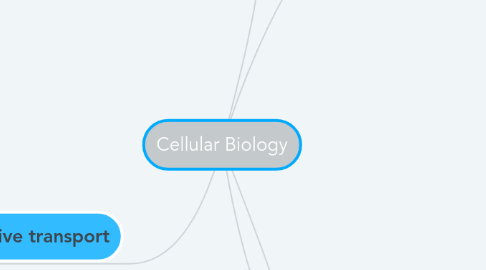
1. Plant and animal cells
1.1. Plant cells have a cell wall and animal cells do not.
1.1.1. Most animal cells are round but most plant cells are more like a rectangular shape.
1.1.1.1. Only plant cells have the ability to go through photosynthesis and are able to store chloroplast.
2. Passive transport
2.1. Simple diffusionis a movement of particles from a high concentration area to a low concentration area.
2.1.1. Facilitated diffusion are when cell membranes of carrier proteins help large charged molecules make its way through.
2.1.1.1. Osmosis is a net movement of water across a selectively permable membrane.
2.2. Passive transport is a movement of ions and molecular substances from across the cell membranes without any need of energy.
3. Active transport
3.1. Active transport is a movement of substances through a membrane that goes against a concentration gradient.
3.1.1. Sodium and potassium cells allows the nerve and the muscle cells to complete its full function.
4. Bulk transport
4.1. There are two types:
4.2. The Endocytosis. The Endocytosis Brings material into the cell.
4.3. The Exocytosis. The Exocytosis perform the act of vesicles containing cellular molecules and they are transported to the cell membrane.
4.4. Bulk transportation moves a large quantity amount of material across the membrane which are listed to the right.
5. Macromolecule
5.1. Macromolecules are very large organic molecules which contain many carbon atoms. There are 4 major macromolecules that are listed to the right.
5.1.1. The big 4:
5.1.2. Carbohydrates: The Carbohydrates are molecules that contain carbon, hydrogen and oxygen. Also they are produced by plants in the process of photosynthesis.
5.1.3. Proteins: Proteins are typically and unbranched chain of amino acids they are also the most important molecule in a living organism.
5.1.4. Nucleic Acids: Nucleic acids are were organisms store information about the structures of their proteins.
5.1.5. Lipids: Lipids is a molecule made up of Carbon, hydrogen, and oxygen. Also a lipid does not dissolve in water.
